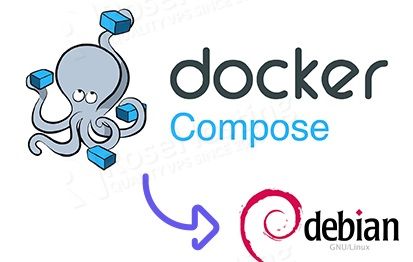
See the Docker Getting Started guide for more usage documentation. See the Docker API developer documentation for more information. Note that if the Docker daemon stops or restarts, all currently running Docker containers are also stopped or restarted.Īlso note that it is possible to send requests to the Docker API and control the Docker daemon without the use of the docker CLI command. Understanding the relationship between the client ( docker), server ( rvice) and containers is important to successfully administering Docker. Typically, users use Docker by running docker CLI commands, which in turn request the Docker daemon to perform actions which in turn result in management of Docker containers.
Debian docker install#
Alternatively, you can install docker-desktop AUR package that does not conflict with existing packages.Īlso, to run Docker Desktop you will need to ensure the Linux system requirements, including virtualization support via KVM. Unfortunately it contains files which conflict with the docker-compose package so you will first need to remove docker-compose if installed.
Debian docker manual#
Īn experimental package for Arch is provided directly by Docker see the manual for more information. The Linux port of the application is relatively new, and complements Docker's CLI frontends.
Debian docker software#
This application is useful for software development teams who develop Docker containers using macOS and Windows. Additional features such as a Kubernetes cluster and a vulnerability scanner are included. To use it, install docker-compose.ĭocker Desktop is a proprietary desktop application that runs the Docker Engine inside a Linux virtual machine. This is useful for setting up reoccuring services that are use often and/or have complex configurations. Docker Composeĭocker Compose is an alternate CLI frontend for the Docker Engine, which specifies properties of containers using a docker-compose.yml YAML file rather than, for example, a script with docker run options. Warning: Anyone added to the docker group is root equivalent because they can use the docker run -privileged command to start containers with root privileges. If you want to be able to run the docker CLI command as a non-root user, add your user to the docker user group, re-login, and restart rvice. # docker run -it -rm archlinux bash -c "echo hello world" The following command downloads the latest Arch Linux image and uses it to run a Hello World program within a container:

Next, verify that you can run containers. You can also try to deconflict the networks (see solutions or ). You may reconnect the VPN immediately afterwards. If this is the case, try disconnecting the VPN before starting the docker service.


Note that starting the docker service may fail if you have an active VPN connection due to IP conflicts between the VPN and Docker's bridge and overlay networks. Next enable/start rvice and verify operation: Install the docker package or, for the development version, the docker-git AUR package. The Docker Engine includes a daemon to manage the containers, as well as the docker CLI frontend. To pull Docker images and run Docker containers, you need the Docker Engine. Docker is a utility to pack, ship and run any application as a lightweight container.


 0 kommentar(er)
0 kommentar(er)
